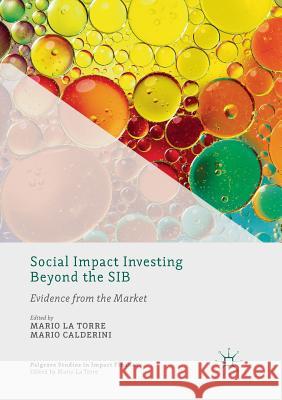Social Impact Investing Beyond the Sib: Evidence from the Market » książka
topmenu
Social Impact Investing Beyond the Sib: Evidence from the Market
ISBN-13: 9783030086749 / Angielski / Miękka / 2019 / 225 str.
Kategorie:
Kategorie BISAC:
Wydawca:
Palgrave MacMillan
Seria wydawnicza:
Język:
Angielski
ISBN-13:
9783030086749
Rok wydania:
2019
Wydanie:
Softcover Repri
Numer serii:
000769995
Ilość stron:
225
Waga:
0.29 kg
Wymiary:
21.01 x 14.81 x 1.3
Oprawa:
Miękka
Wolumenów:
01
Dodatkowe informacje:
Wydanie ilustrowane











